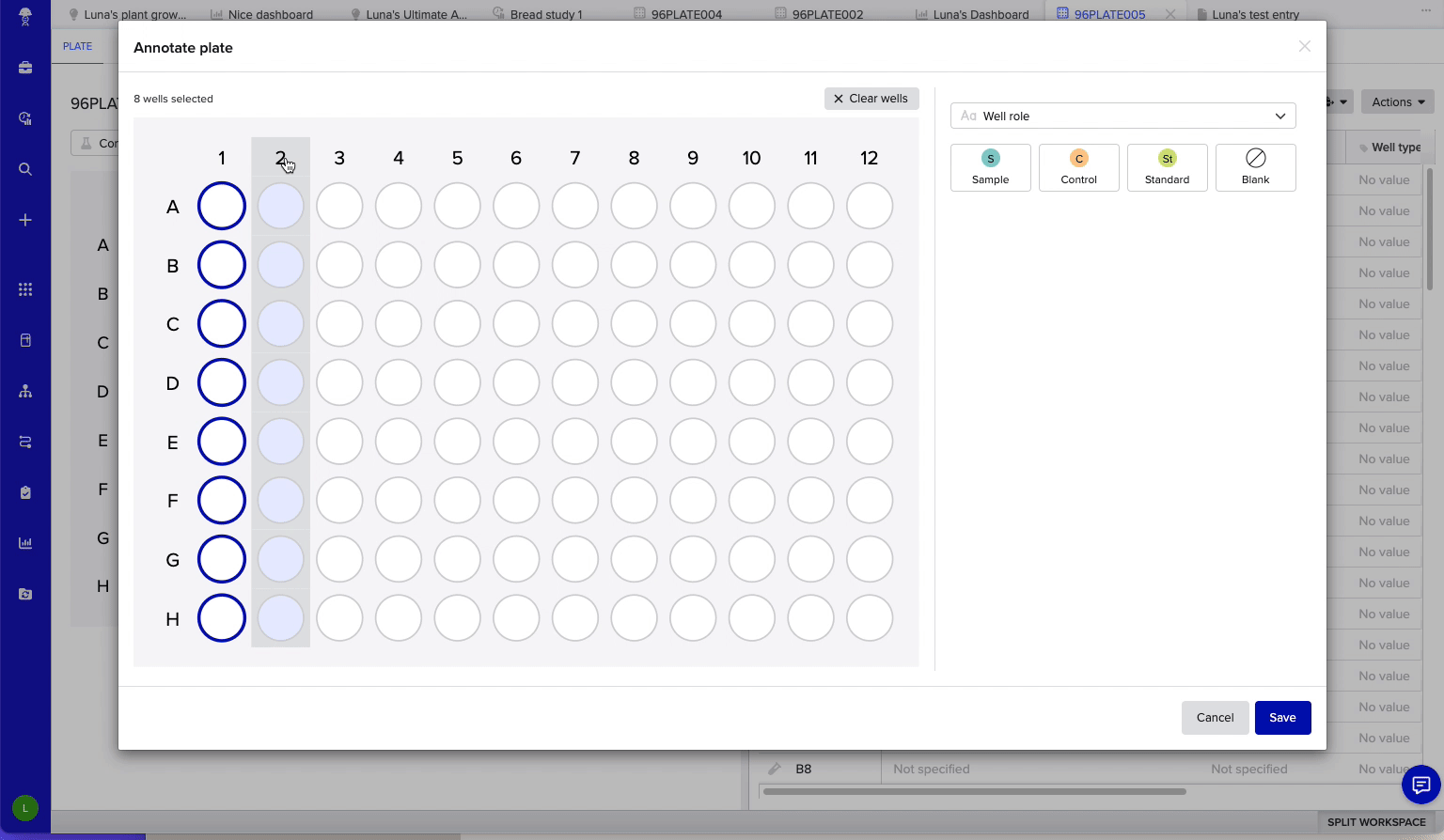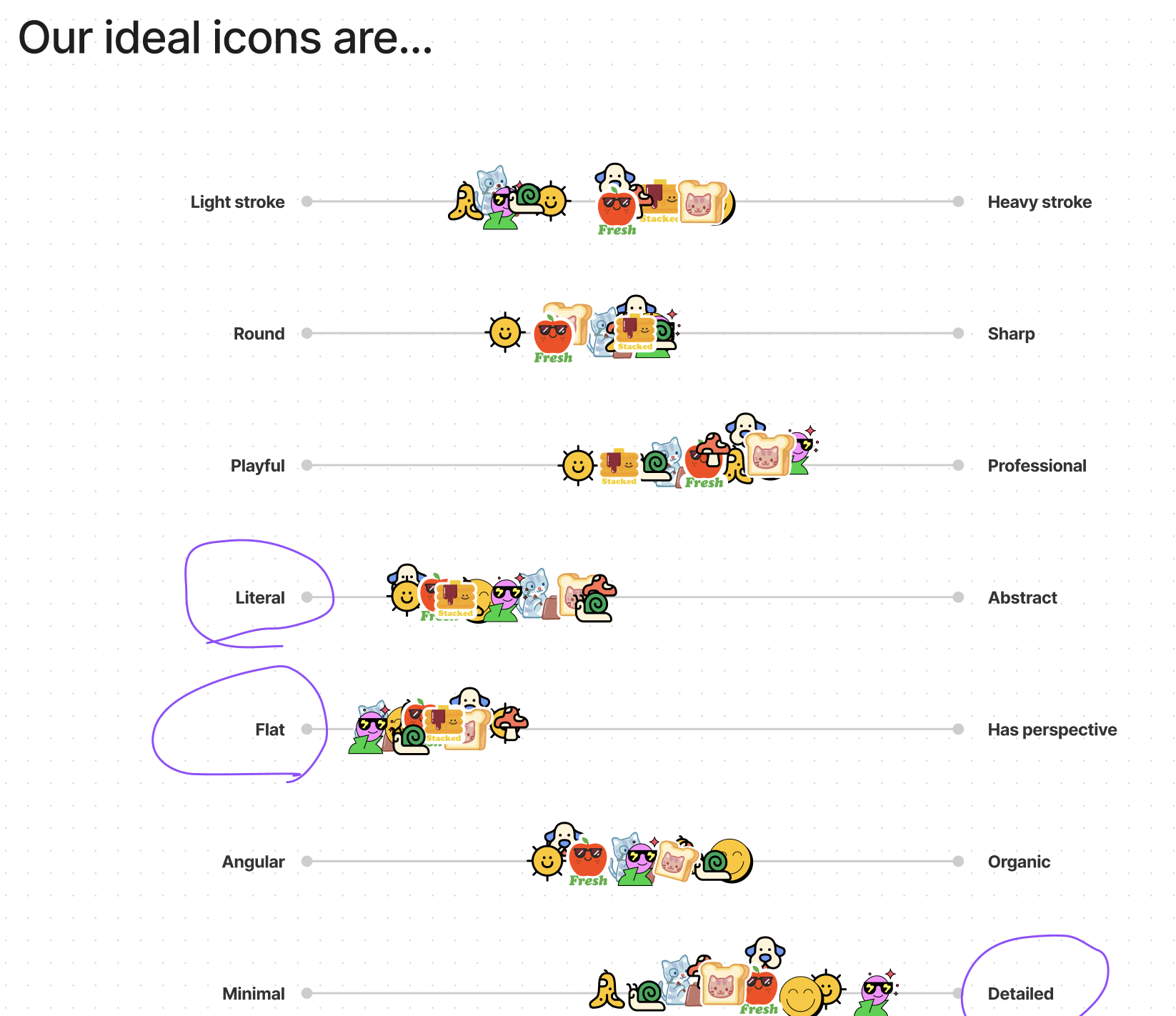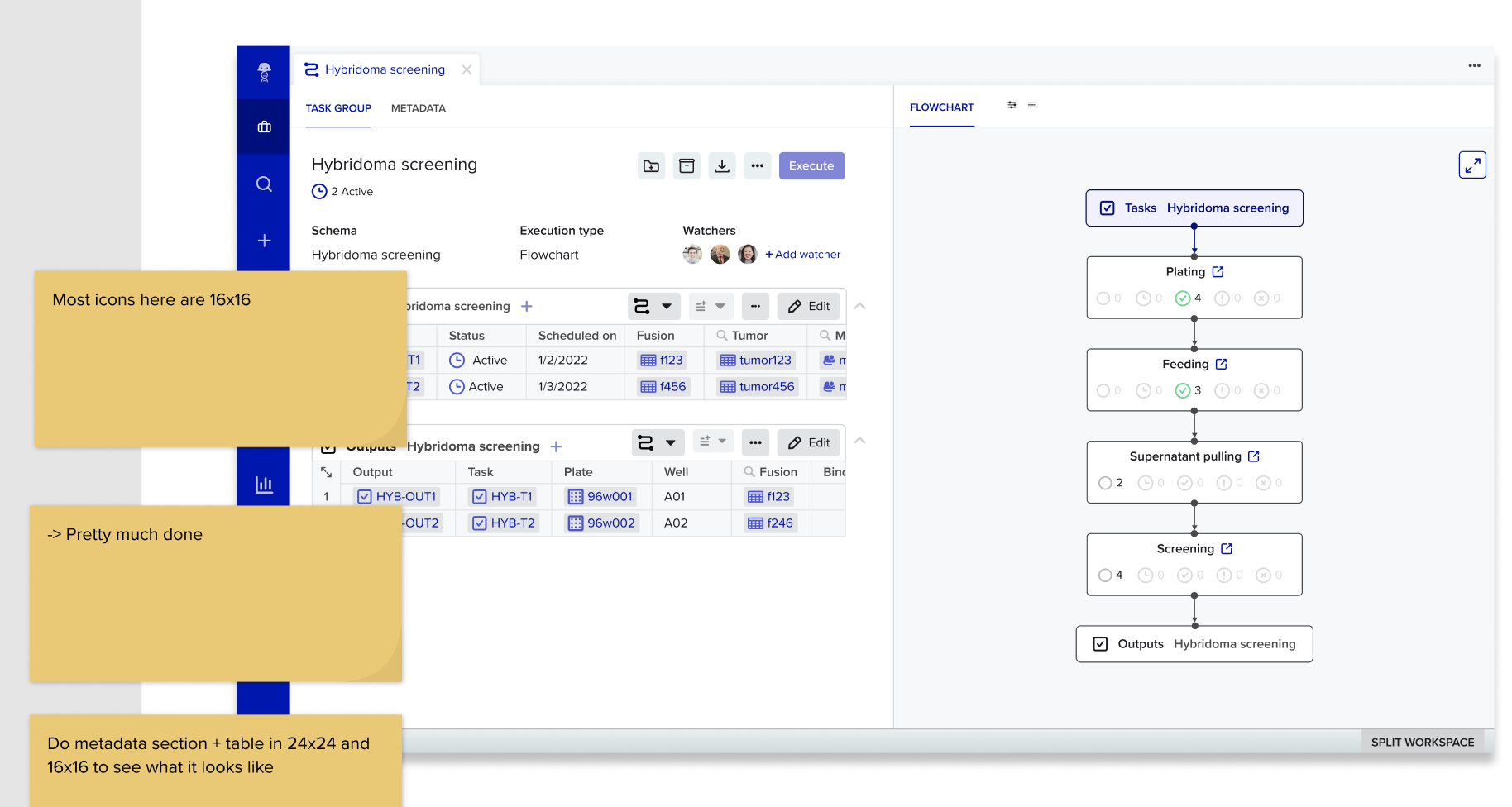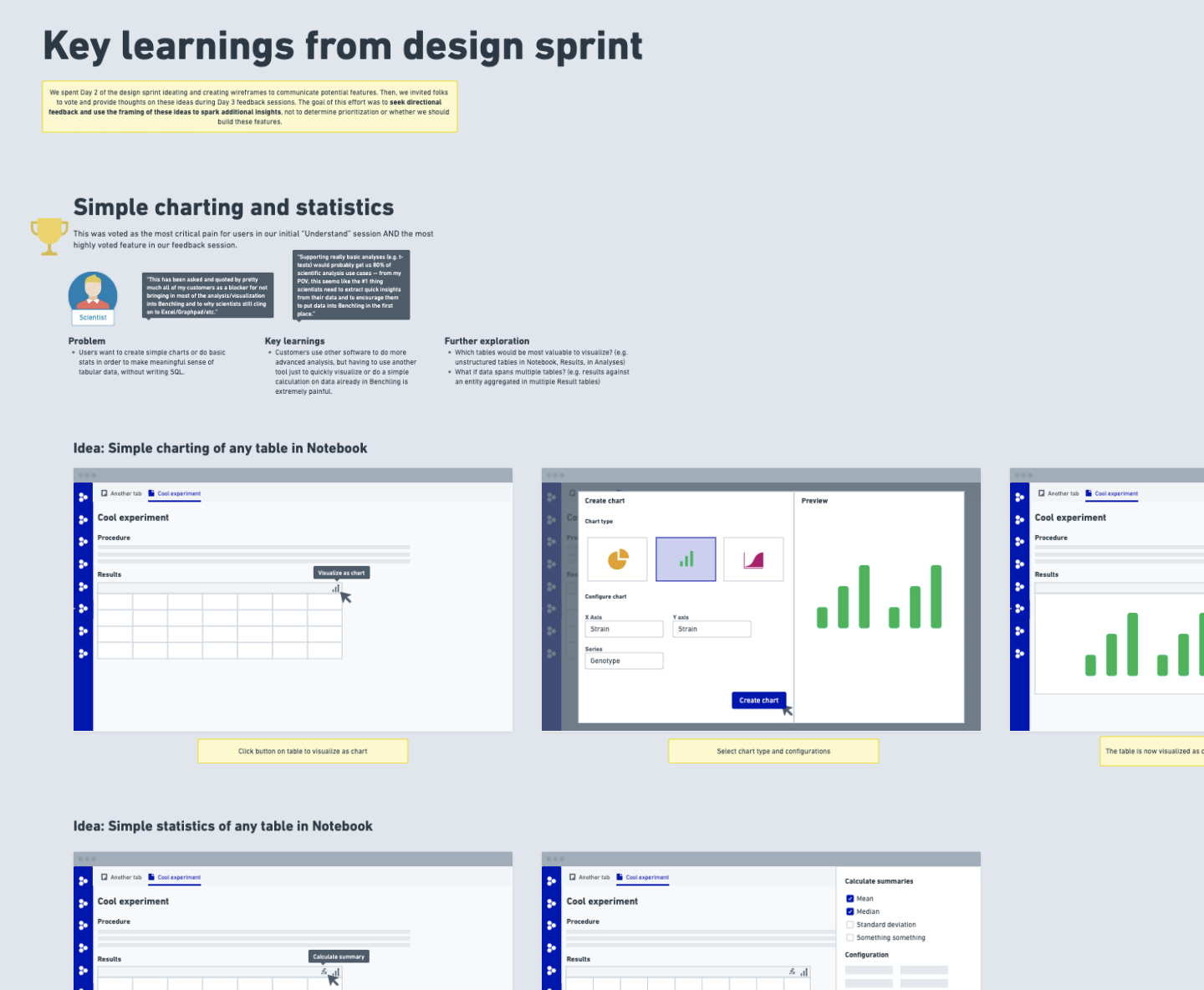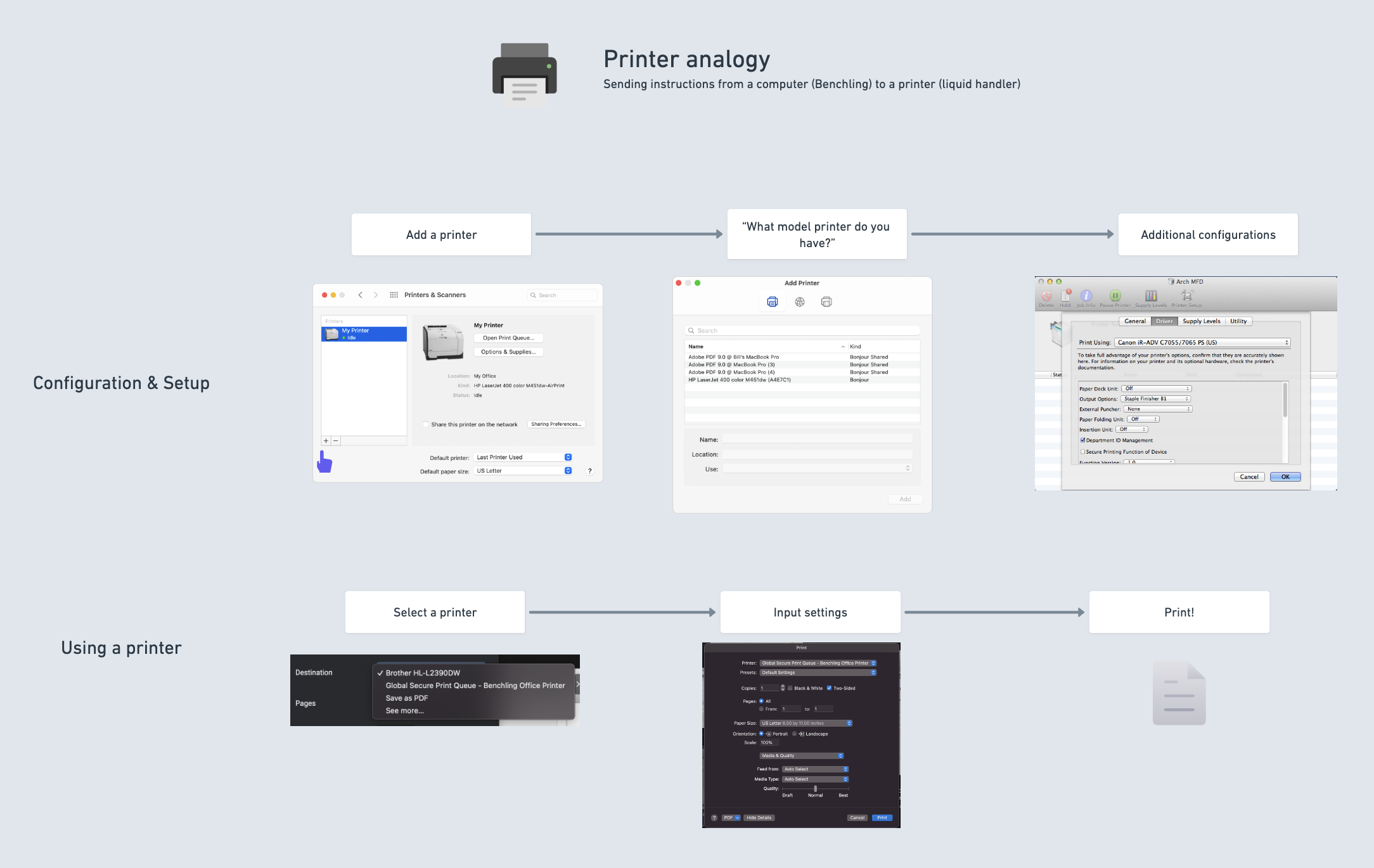Creating tools to bring biotech innovations to market faster
Since 2021, I’ve been helping scientists unlock the power of biotechnology at Benchling! On this page, I will describe some accomplishments that I’m proud of, and stories that illustrate how I think and solve problems. So here is just a little bit about what I’ve been up to:
Launching a new analysis tool
As design lead for the Automation & Analytics group, my role involves creating a cohesive experience for scientists, starting from capturing experimental results via instruments in the lab, to extracting meaningful insights from raw data - ultimately shaping decision-making for the next set of experiments.
Previously, scientists were analyzing experimental data outside of Benchling, leading to fragmented workflows, messy data organization, and multiple sources of truth. In June 2023, my team launched a new scientific analytics product, connecting Benchling with leading analytics tools such as JMP. We have since expanded with charting and statistical analysis capabilities, enabling scientists to capture the complete end-to-end story of their experiment all in Benchling (currently in beta).
Visualizing scientific workflows through plate maps
During 2023-2024, I worked on plate maps in Benchling - a foundational tool for many scientific workflows.
Well plates are a common tool for laboratory experiments. Each tiny well on a 96-well plate can hold different samples, reagents, or experimental setups, allowing researchers to efficiently conduct high-throughput experiments by processing many samples at once.
Our team built a plate map tool that visually represents the placement of samples, controls, experimental conditions, and other metadata on a plates of various dimensions (6, 12, 24 96, 384 wells are some common sizes.)
I designed simple well selection interactions, enabling scientists to easily transcribe annotations to specific wells. In addition, we developed an easy, programmatic method of labeling wells numerically, accommodating common scientific use cases of laying out groups of samples (for example: in this region of the plate, I want to place 40 groups of samples in replicates of 2).
This tool is currently in development and expected to be tested with customers in beta soon.
Defining icon styles
As part of a design systems initiative, I spearheaded up a plan to unify our icon library. With the help of a small team, I assessed our current icon library to identify visual inconsistencies, explored alternative styles, and chose an icon library that was eventually purchased and implemented!
Where we started
Historically, engineers at Benchling pulled icons from various icon libraries, or designers made new icons from scratch without guidelines on what they should look like.
Without a defined icon style, our icons were looking very inconsistent!
facilitating conversations
I led a series of workshops with the design team to:
Understand current icon usage: Where and how are icons currently being used in product? e.g. in navigation, as status indicators, to convey objects or actions?
Identify visual inconsistencies in our current icon set: Do we use light or heavy strokes? Do our icons exhibit consistent proportions? (Turns out, it was a little all over the place.)
Align on style: Should our icons be small and pudgy or sharp and serious? What tone or impression would be appropriate given our brand identity and icon usage?
Additionally, I conducted research on other design systems to understand how icon styles are defined and to get inspiration on usage guidelines and team processes.
An example of some of the exercises we did together as a team.
I love the way my colleagues described some icon sets we reviewed 🤣
a path forward
I enlisted a small team, and together we tested several icon libraries by incorporating them into mocks.
This took longer than expected… which helped us grasp the giant effort required to replace our current icon set with custom icons! Considering our limited resources, we decided that the best course of action would be to purchase an existing icon library as opposed to developing a custom one. So, we switched our focus to evaluating existing icon libraries on visual style, completeness, and how well they fit into the existing product.
Implementation
After careful evaluation and consideration, we agreed on a library that met our visual criteria and was extensive enough to support our needs. Long story short - our awesome platform designers and engineers took over from there to replace our current icons with new ones from the library.
Impact
We shipped the new icons in May 2023. 🚀 We weren’t sure if this would have significant customer impact… but to our surprise, they noticed right away! Just two days after pushing the new icons to production, we received the following feedback from a customer:
“Please give my regards to the UI team as I have noticed some visual tweaks to the icons to make them more readable. I can now understand what the Inventory icon in the main menu is! The super-and sub-script as well as text formatting icons are also clearer, as is the column type icons in tables...”
Besides customer impact, I consider the biggest impact of this project to be improving efficiency and streamlining workflows for our internal teams. We now have a vast library of over 3000 icons to choose from. And if we ever need to create a custom icon, we have a well-defined icon style to reference. This will save our designers and developers a lot of time when building new user-facing features, and ensures that our visual language remains consistent going forward.
Fostering design-thinking culture
I facilitate regular design thinking workshops/sprints with my scrum team and adjacent team members. Sometimes we gather to solve a specific problem, and sometimes we conduct interactive exercises. They are a great way to get perspectives from different stakeholders and inspire others to take a user-centered approach to problem-solving. Plus, they are fun! 😄
I recently led a cross-functional design sprint on the future of Analytics at Benchling - a very broad concept! We synthesized past user research and stakeholder knowledge on scientific and operational analytics, then brainstormed fresh ideas.
This sprint had real impact on how our team viewed the role of analysis in a scientist’s workflow. Before, we thought analysis was something scientists did at the end of an experimental study. However, participants from the sprint brought to my attention that scientists think ahead as to how they would analyze an experiment while planning it. This inspired us to explore how we might enable a “start with the end in mind” mentality during study design.
Another learning was that seeing your results come in at the end of a days-long experimental procedure and making meaningful sense of that raw data is the most exciting part of the scientific process. I didn’t realize that data analysis could be… well, joyful! ✨
Creating an environment where diverse perspectives converge has proven to be immensely valuable for our team, so I continue to think about how I can create opportunities for effective cross-functional collaboration.
Influencing product strategy
Having worked on several 0-to-1 type of projects throughout my career, I’ve gotten good at navigating ambiguity. Besides delivering mocks and prototypes, I believe designers are well-positioned to use the power of visual problem-solving to influence product direction at a conceptual level.
I’ve found that a good way to distill a technically complex or unfamiliar problem and make it digestible to others is to use familiar analogies. For example, on a recent domain modeling exercise I worked on to illustrate how new Benchling product concepts could fit together, I came up with an analogy that “setting up and using instruments in the lab should be as easy as setting up and using a printer.” The output of this exercise provided clarity to leadership and adjacent teams on how we can provide a seamless end-to-end experience for users. I advocated for simpler, out-of-the-box solutions that match the user’s mental model and reduce configuration burden.
I’m proud that I was able to deliver concepts that were grounded in personas and use cases, but elevated to a level above product specs and mockups. This new way of thinking and communication has inspired and influenced other teams to do the same, which has up-leveled the work of designers across the board in being strategic thought partners to their product and engineering counterparts.
